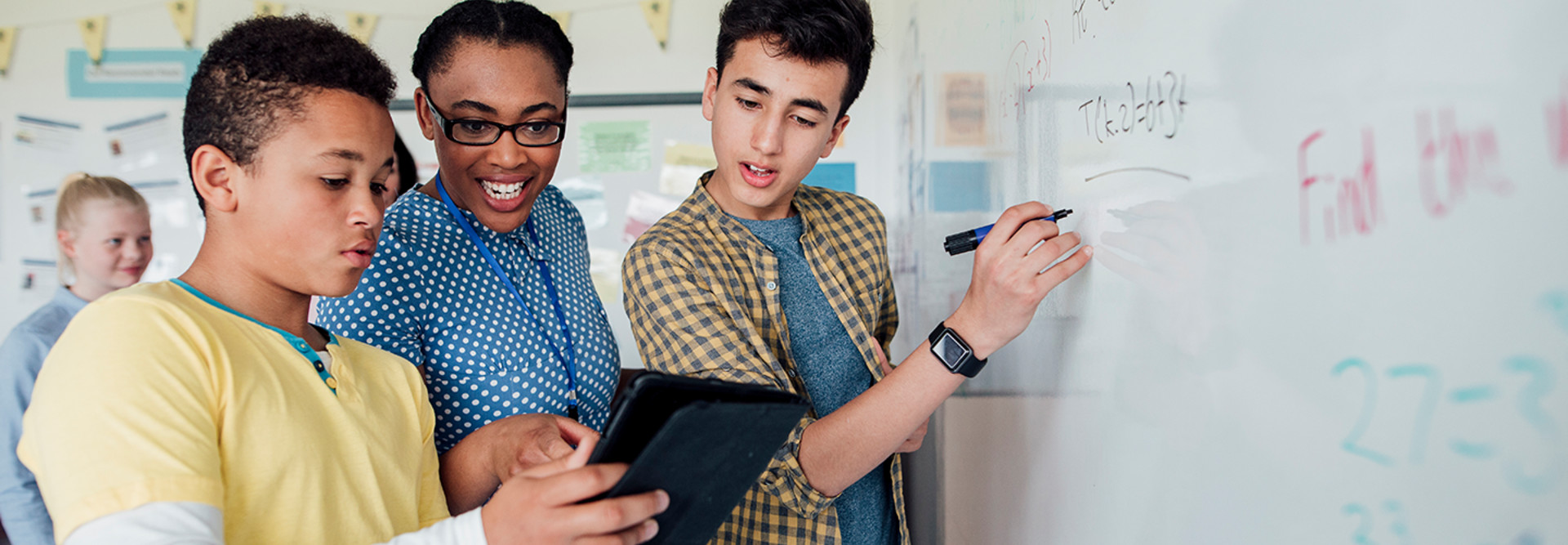How K–12 Schools Can Get Started with Blended Learning
Last school year, our school started a one-to-one Chromebook initiative for sixth-grade students. That meant our incoming seventh-grade students would not only have Chromebooks, but they would know how to use them. Entering the school year, I had the following assumptions:
- All of our classroom management problems would be solved because our students would be engaged with technology.
- We could cancel our school’s future orders of copy paper and get rid of the copy machines, because we could put everything online.
- Students would always do their work if it was online, because they always had access to a device.
- Students would be adept with the technology because they used it the year before.
- A one-to-one initiative would not alter how I teach my students.
After the school integrated the new Chromebooks, however, my original assumptions played out as a distinctly different reality:
- One-to-one initiatives have a lot of their own classroom management problems. Luckily, a lot of these issues had been hammered out the year before, but the biggest issue was off-task behavior online. Additionally, just because students are doing work on a computer, that doesn’t mean that it is engaging or effective.
- A lot of school work still needs to be done on paper. Depending on the grade level and subject, students can’t always work out their thinking only on a computer, particularly with math. Blended learning classrooms often move seamlessly between online and offline activities, so don’t cancel those copier maintenance contracts quite yet.
- Students don’t do their work for many reasons beyond access to and availability of technology.
- Though my students used Chromebooks in the past, they still needed support to understand how to best use the internet as a resource for learning.
- The one-to-one initiative at my school completely changed the way that I teach. Blended learning has helped me become a more effective and efficient educator.
MORE FROM EDTECH: Check out how K–12 schools are rolling out Chromebooks in their area!
5 Ways to Get a Blended Learning Program Off the Ground
-
Enter with the Right Perspective: The key word that people miss in blended learning is “blended.” Technology will not replace the great work that you already do in your classroom. It should reduce the mundane, repeatable tasks that bog down your class time. Technology should help us become better teachers by helping identify needs instantaneously and reduce wait time for valuable academic feedback.
-
Start with Google Classroom: The very first thing you must have is Google Classroom. It is easy to set up and enroll students in your classes. Google Classroom is the easiest way to get materials and instructions out to your students immediately. Also, most educational apps connect with Google Classroom to import rosters and post assignments. Start simple by posting your daily agenda only on Google Classroom, and make it part of your students’ entrance routine to check for the agenda and an activity online.
- Investigate Different Learning Models: Blended learning is going to look different in just about every classroom. Teaching is a personal endeavor, so each teacher will blend technology into their classrooms in their own way. Assess your comfort level by looking at some models of blended learning used in successful classrooms:
- Station rotation: Great when device availability is limited. Students rotate through stations that include small-group instruction, collaborative tasks and independent practice on the computer.
- Flex model: Students work through content and course material online while the teacher takes the role of facilitator and guide. In the flex model, the students are in charge of their own learning.
- Flipped classroom: Students learn new concepts at home through homework while class time is freed up for hands-on learning and guided practice.
-
Assign Something: Get started by giving your students a list of online assignments in the form of a playlist or hyperdoc. Playlists and hyperdocs flip the responsibility of learning from the teacher to the students in the form of a self-paced list of assignments and resources. I like teaching this way because it frees me up from the front of the room to help individual students and provide more meaningful instruction in small groups.
-
Ask for Help: Coming into this school year, I had huge plans on how our school’s one-to-one initiative was going to transform my classroom. I soon found out that I was in way over my head. I had good ideas, but I was overwhelmed with finding the right mix of technology and traditional teaching that worked best for me. Luckily, we have a fantastic technology integration coach, plus our district offered blended learning coaching from a local nonprofit. Now, my students learn at their own pace through video and playlists. I am freed up to help individual students and teach in small groups.
Don’t be afraid to ask for help from administration, coaches and other teachers who are successful in blending their classrooms. Remember, you’re just getting started. Keep in mind that technology shouldn’t be used just for technology’s sake — everything you do should be for the benefit of your students.









